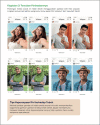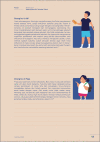'Dove Confident Me Indonesia: Single Session': study protocol for a randomised controlled trial to evaluate a school-based body image intervention among Indonesian adolescents
- PMID: 34784916
- PMCID: PMC8593637
- DOI: 10.1186/s12889-021-11770-0
'Dove Confident Me Indonesia: Single Session': study protocol for a randomised controlled trial to evaluate a school-based body image intervention among Indonesian adolescents
Abstract
Background: Due to the prevalence and associated adverse health consequences of negative body image among adolescents globally, there is a need to develop acceptable, effective, and scalable interventions. School-based body image interventions delivered by trained teachers show promise in reducing negative body image in adolescents. However, there is currently a lack of evidenced-based body image interventions for use in low- and middle-income countries (LMICs). This paper outlines a protocol for the development and evaluation of Dove Confident Me Indonesia: Single Session, a single-session, teacher-led body image intervention for Indonesian adolescents.
Method: The effectiveness of the intervention will be evaluated using a cluster randomised controlled trial design. Due to the COVID-19 pandemic, the trial will be conducted online. Trained teachers or school guidance counsellors will deliver the intervention. Self-report questionnaires will be collected at three time points: baseline, post-intervention, and two-month follow-up. The primary outcome is body esteem. Secondary outcomes are internalisation of appearance ideals, mood, engagement in life activities, tendency to engage in appearance comparisons, and skin shade satisfaction. A minimum of 1000 participants will provide 95% power to detect small-to-medium intervention effects. To account for attrition and potential internet issues, the sample will comprise of 2000 Indonesian adolescents in grades 7-9, attending state junior high schools in Surabaya, East Java. Quantitative and qualitative data on acceptability of the intervention will also be collected from teachers and students. Additionally, fidelity of lesson implementation will be assessed. This project received ethical approval from the Universitas Indonesia and the University of the West of England. The intervention will be disseminated in junior high schools throughout Indonesia via UNICEF's Life Skills Education (LSE) programme, which will be freely available for teachers to download.
Discussion: This paper presents Dove Confident Me Indonesia: Single Session, a culturally adapted school-based intervention designed to improve Indonesian adolescents' body image. It details the plan for evaluation, highlighting the strengths and limitations of the proposed study design. It will be informative for others aiming to adapt evidence-based school curricula to promote well-being among adolescents in LMICs.
Trial registration: NCT04665557 . Registered 11th December 2020.
Keywords: Adolescent mental health; Body image; Indonesia; Life skills education; Low- and middle-income countries; Randomised controlled trial; School-based intervention; Single-session intervention; Southeast Asia; Study protocol.
© 2021. The Author(s).
Conflict of interest statement
PCD is an independent consultant to the Dove Self-Esteem Project global education initiative. PCD and SH were on the Dove Self-Esteem Project Global Advisory Board in 2013–2016. The authors declare no other conflicts of interest in relation to this work.
Figures





Similar articles
-
Evaluating a school-based body image lesson in Indonesia: A randomised controlled trial.Body Image. 2024 Mar;48:101654. doi: 10.1016/j.bodyim.2023.101654. Epub 2023 Dec 5. Body Image. 2024. PMID: 38056068 Clinical Trial.
-
Effectiveness of a brief school-based body image intervention 'Dove Confident Me: Single Session' when delivered by teachers and researchers: Results from a cluster randomised controlled trial.Behav Res Ther. 2015 Nov;74:94-104. doi: 10.1016/j.brat.2015.09.004. Epub 2015 Sep 30. Behav Res Ther. 2015. PMID: 26469131 Clinical Trial.
-
Protocol of a cluster randomised trial of BodyKind: a school-based body image programme for adolescents.BMC Public Health. 2023 Nov 14;23(1):2246. doi: 10.1186/s12889-023-17002-x. BMC Public Health. 2023. PMID: 37964252 Free PMC article.
-
School-Based Mental Health Initiative: Potentials and Challenges for Child and Adolescent Mental Health.Front Psychiatry. 2022 Jun 9;13:866323. doi: 10.3389/fpsyt.2022.866323. eCollection 2022. Front Psychiatry. 2022. PMID: 35757210 Free PMC article. Review.
-
Effects of Media Health Literacy School-Based Interventions on Adolescents' Body Image Concerns, Eating Concerns, and Thin-Internalization Attitudes: A Systematic Review and Meta-Analysis.Health Commun. 2022 Jan;37(1):20-28. doi: 10.1080/10410236.2020.1813954. Epub 2020 Sep 2. Health Commun. 2022. PMID: 32873082
Cited by
-
Evaluating the Efficacy of a Social Media-Based Intervention (Warna-Warni Waktu) to Improve Body Image Among Young Indonesian Women: Parallel Randomized Controlled Trial.J Med Internet Res. 2023 Apr 3;25:e42499. doi: 10.2196/42499. J Med Internet Res. 2023. PMID: 37010911 Free PMC article. Clinical Trial.
-
Cultural adaptation and validation of the Positive and Negative Affect Schedule for Children (PANAS-C) among Indonesian adolescents.BMC Psychol. 2024 Nov 28;12(1):703. doi: 10.1186/s40359-024-02209-3. BMC Psychol. 2024. PMID: 39609711 Free PMC article.
-
Body image as a global mental health concern.Glob Ment Health (Camb). 2023 Feb 27;10:e9. doi: 10.1017/gmh.2023.2. eCollection 2023. Glob Ment Health (Camb). 2023. PMID: 36861019 Free PMC article. Review.
-
Mitigating Harms of Social Media for Adolescent Body Image and Eating Disorders: A Review.Psychol Res Behav Manag. 2024 Jul 4;17:2587-2601. doi: 10.2147/PRBM.S410600. eCollection 2024. Psychol Res Behav Manag. 2024. PMID: 38978847 Free PMC article. Review.
References
-
- Bucchianeri MM, Neumark-Sztainer D. Body dissatisfaction: an overlooked public health concern. J Public Ment Health. 2014;13(2):64–69. doi: 10.1108/JPMH-11-2013-0071. - DOI
-
- Patton GC, Sawyer SM, Santelli JS, Ross DA, Afifi R, Allen NB, Arora M, Azzopardi P, Baldwin W, Bonell C, Kakuma R, Kennedy E, Mahon J, McGovern T, Mokdad AH, Patel V, Petroni S, Reavley N, Taiwo K, Waldfogel J, Wickremarathne D, Barroso C, Bhutta Z, Fatusi AO, Mattoo A, Diers J, Fang J, Ferguson J, Ssewamala F, Viner RM. Our future: a lancet commission on adolescent health and wellbeing. Lancet. 2016;387(10036):2423–2478. doi: 10.1016/S0140-6736(16)00579-1. - DOI - PMC - PubMed
Publication types
MeSH terms
Associated data
Grants and funding
LinkOut - more resources
Full Text Sources
Medical

